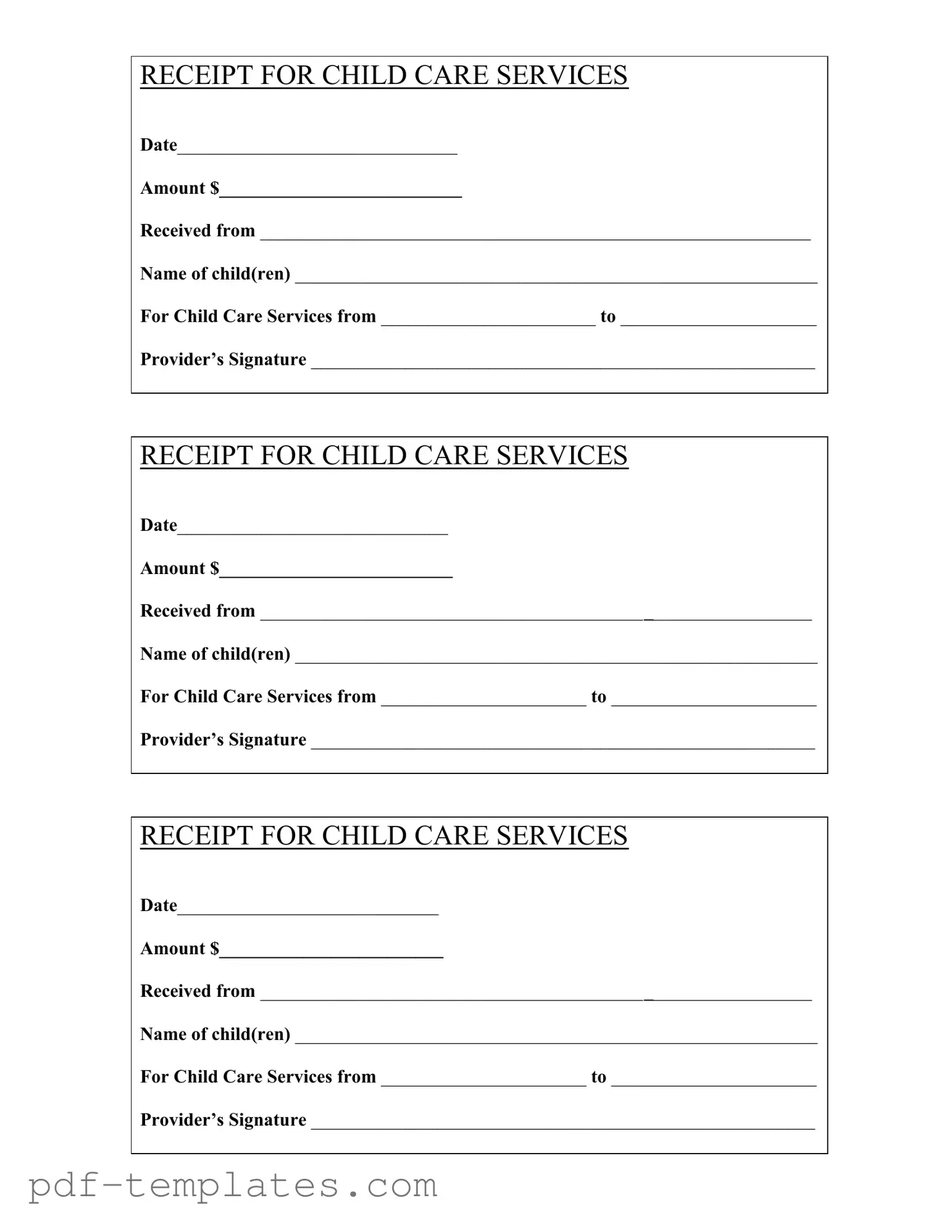The first document similar to the Childcare Receipt form is the Medical Receipt. This document serves as proof of payment for medical services rendered. Like the childcare receipt, it includes the date of service, the amount paid, and the name of the patient. It may also feature the provider's signature, confirming that the service was provided. Both documents are essential for individuals seeking reimbursement from insurance companies or for tax purposes.
Another comparable document is the Rent Receipt. This receipt is issued by landlords to tenants, confirming that rent has been paid for a specific period. It typically includes the date of payment, the amount received, and the tenant's name. Similar to the childcare receipt, it serves as proof of payment and can be used for record-keeping or tax deductions related to housing expenses.
The Tuition Receipt is also akin to the Childcare Receipt. Educational institutions provide this document to students or parents to confirm payment of tuition fees. It includes the date, amount paid, and the name of the student. Both receipts are crucial for individuals claiming education-related tax credits or deductions, as they provide necessary documentation of expenses incurred.
In addition, the Donation Receipt is another document that shares similarities. Charitable organizations issue this receipt to donors, acknowledging their contributions. It contains the date of the donation, the amount given, and the donor's name. Like the childcare receipt, it serves as proof for tax purposes, allowing donors to claim deductions for their charitable contributions.
In the realm of documentation related to financial transactions, it's essential to have reliable forms. One such critical document is the California Rental Application form, which serves to screen potential tenants before leasing property. This form gathers important details like employment and rental history, ensuring a thorough evaluation of applicants. For those looking for comprehensive resources, All California Forms provide a variety of legally compliant templates to facilitate the rental process.
The Invoice is another document that resembles the Childcare Receipt. Businesses issue invoices to clients for services rendered or products sold. An invoice lists the date, amount due, and details about the transaction. While an invoice may request payment, a childcare receipt confirms that payment has already been made, serving as a record for both parties involved.
The Payment Confirmation Email is also similar in function. This document is typically sent electronically and confirms that a payment has been processed. It includes the date, amount, and recipient's name. Like the childcare receipt, it serves as proof of a completed transaction and can be used for personal record-keeping or financial management.
Lastly, the Service Agreement can be considered similar. This document outlines the terms of service between a provider and a client, including payment details. While it may not serve as a receipt itself, it often includes a section for payment confirmation. Both documents are important for establishing a clear understanding of the services provided and the financial obligations involved.
